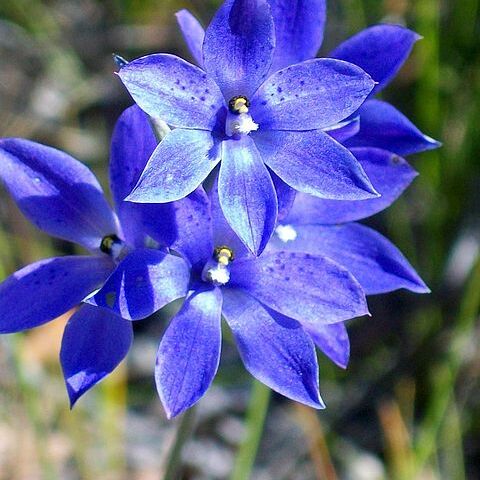Plant at fl. to 50–(70) cm. tall. Lf c. 5–12 mm. wide, fleshy, deeply channelled. Fls often ∞, sts > 20. Per. c. 11–13 mm. long, blue, us. with darker spots. Sepals and petals rather broad. Labellum slightly more rounded. Column-arms flattened, cilia white and mostly marginal, each arm projecting from the anterior margin of the side lobule; post-anther lobe little if at all taller than anther, erect, ± ornamented at top with violet to yellow, thick, finger-like calli; side lobules distinct, often much taller, yellow, fleshy and ± jagged on margins.
A slender orchid. The leaf is narrow and sword shaped. It is 20-30 cm long by 10-15 mm wide. The leaf is fleshy. The edges can be rounded and thickened. The flowering stem can be 20-70 cm long. The flowers can be blue to deep purple. They can also be mauve or pink. The often have small dark spots.

